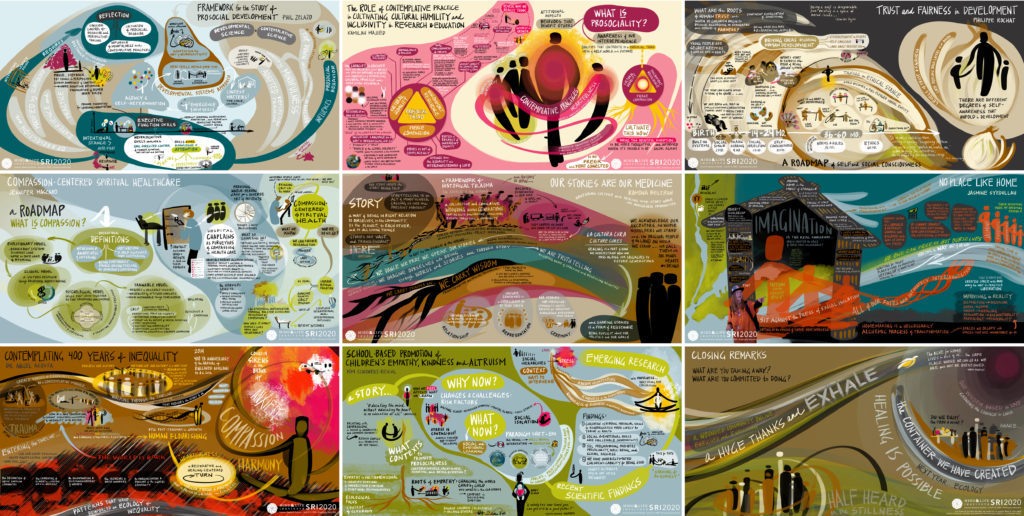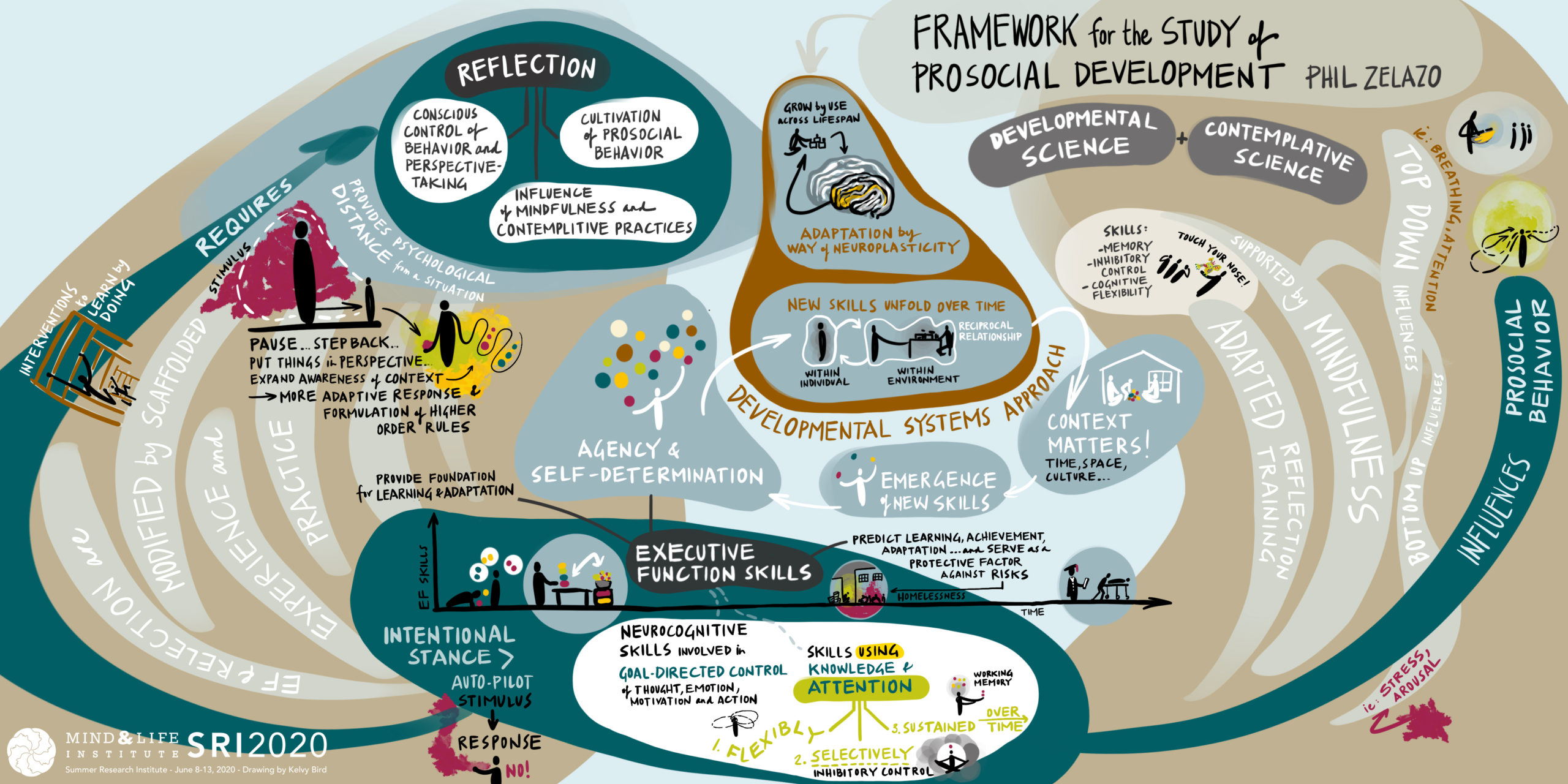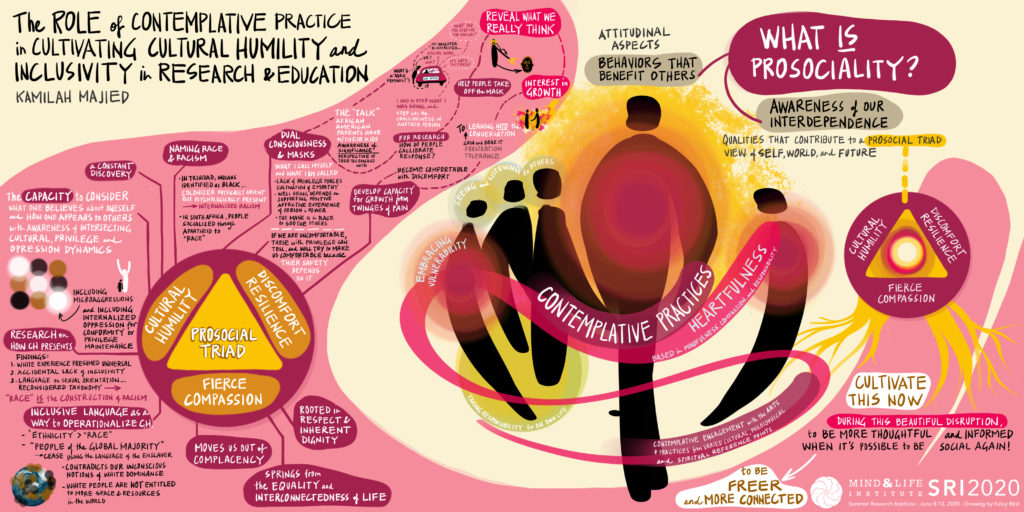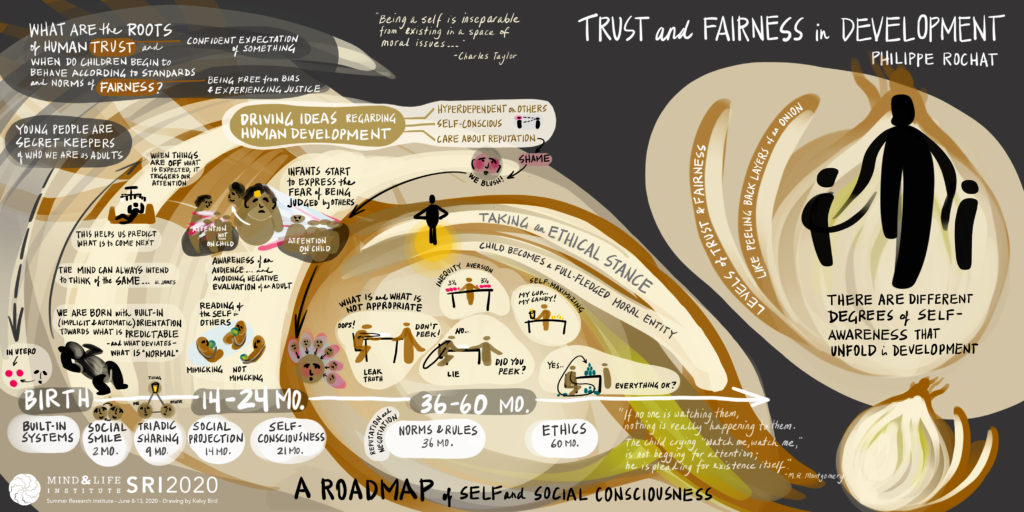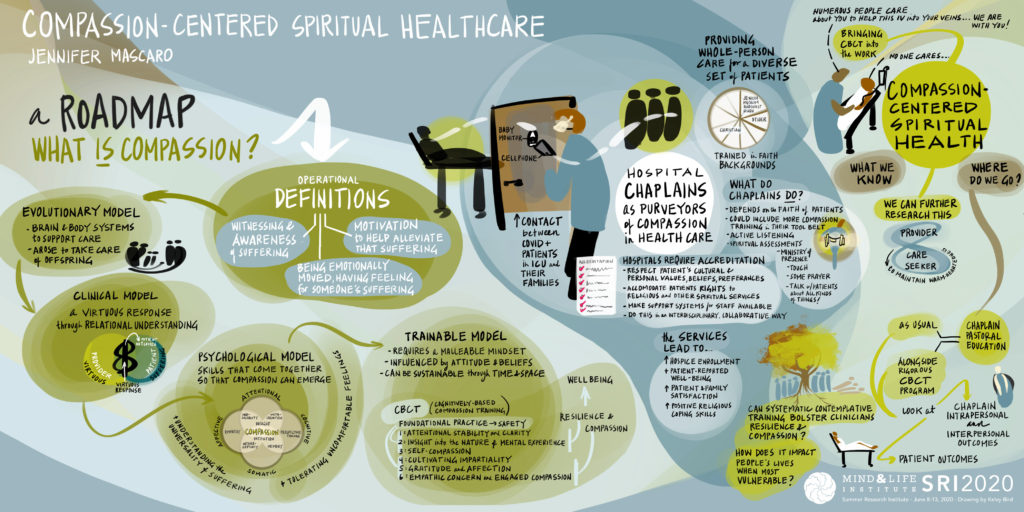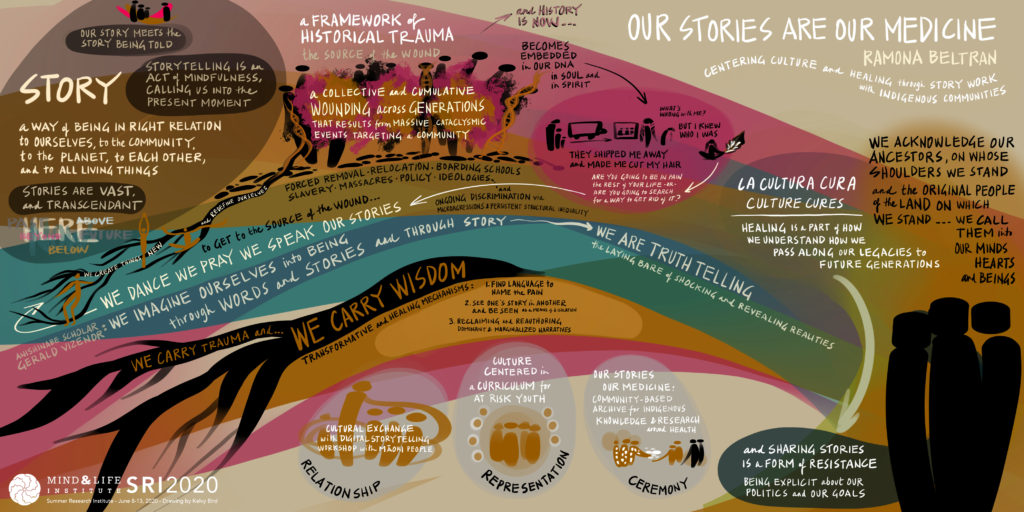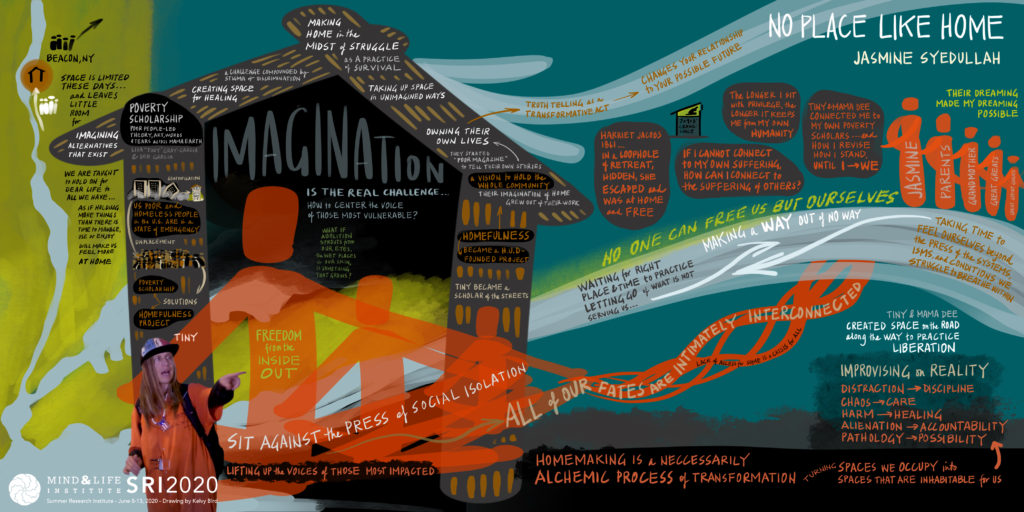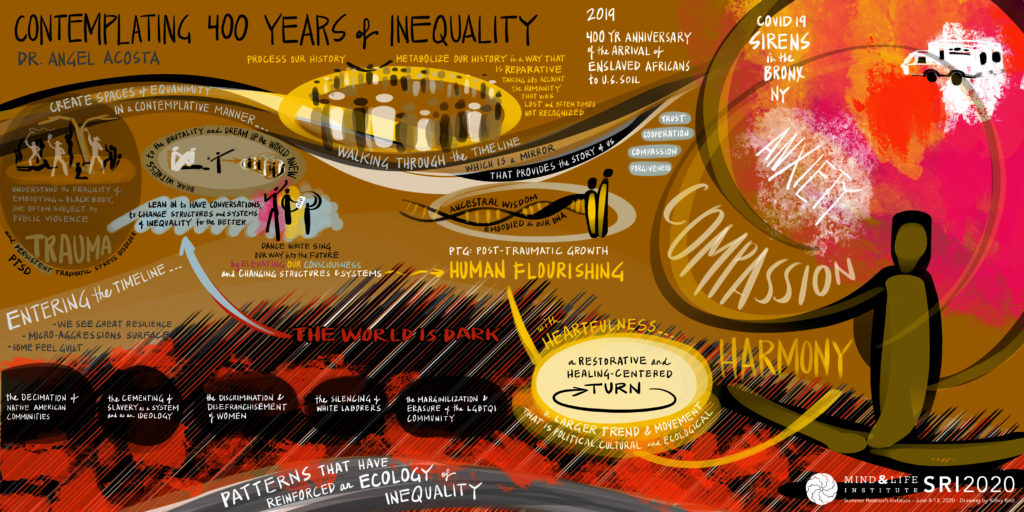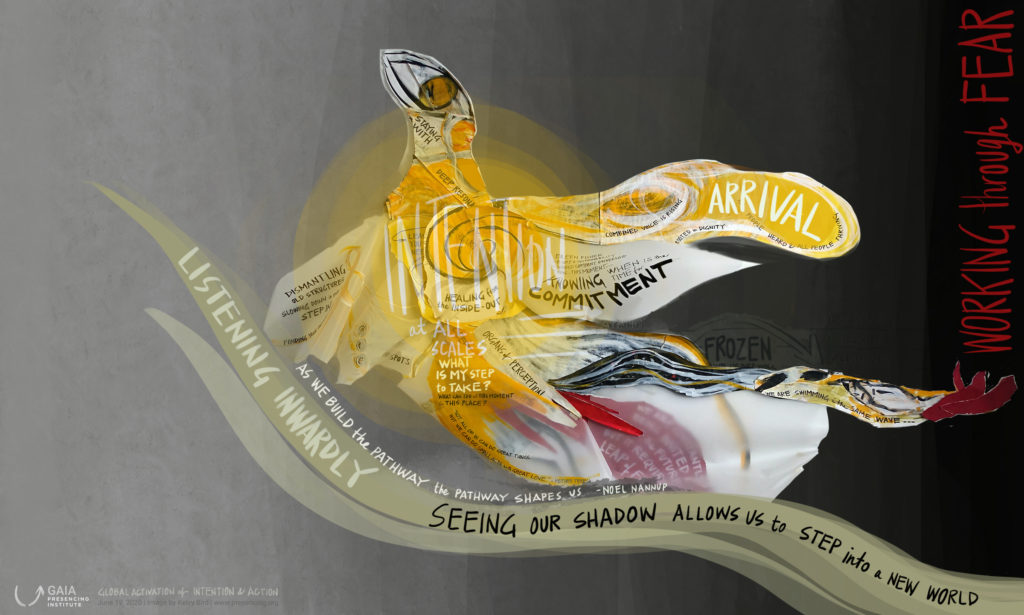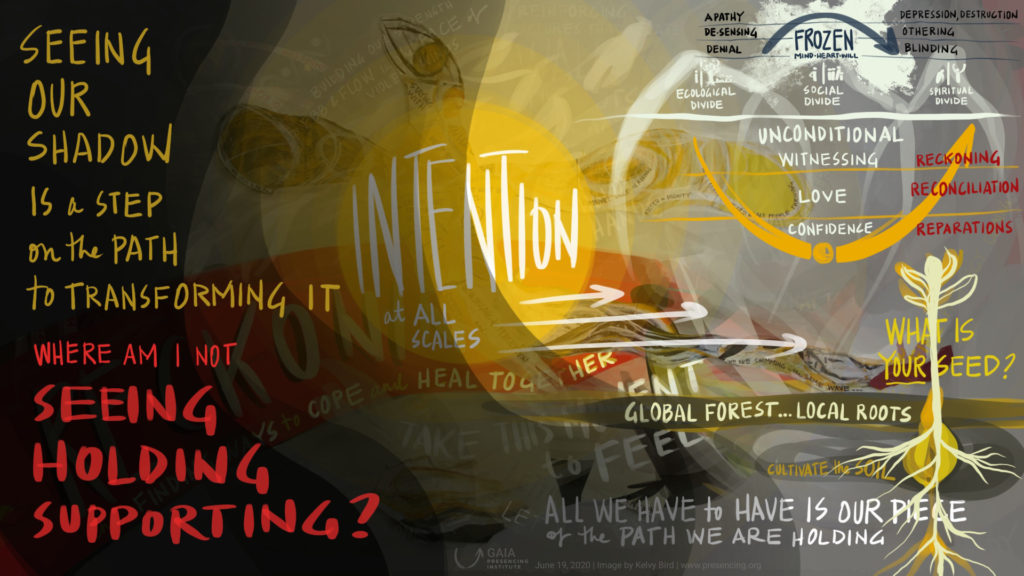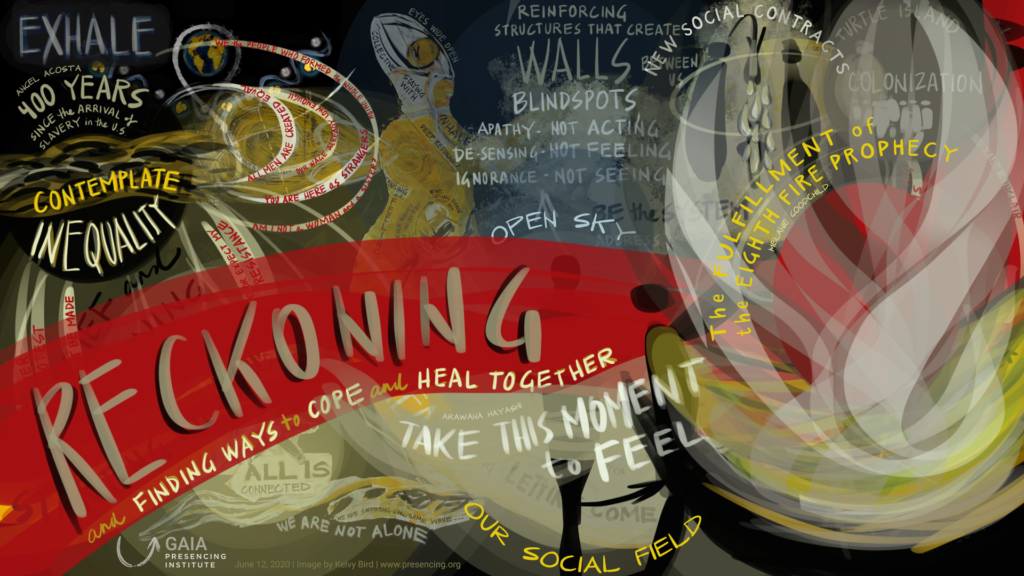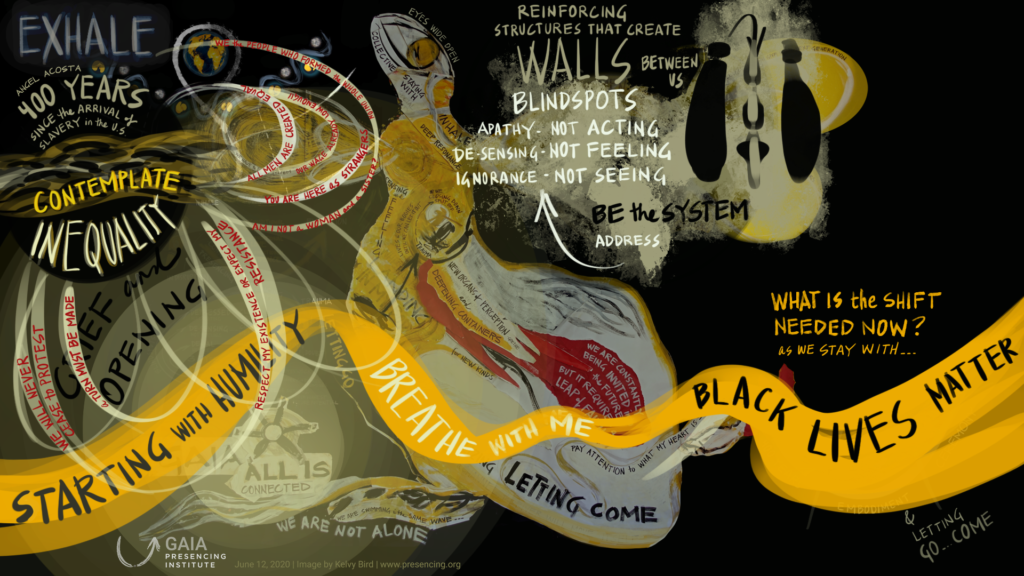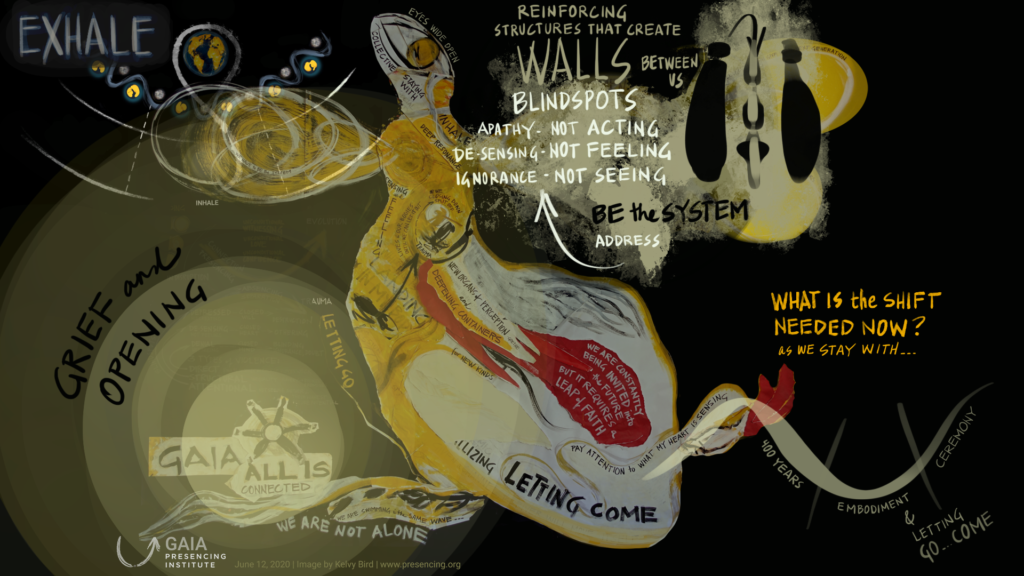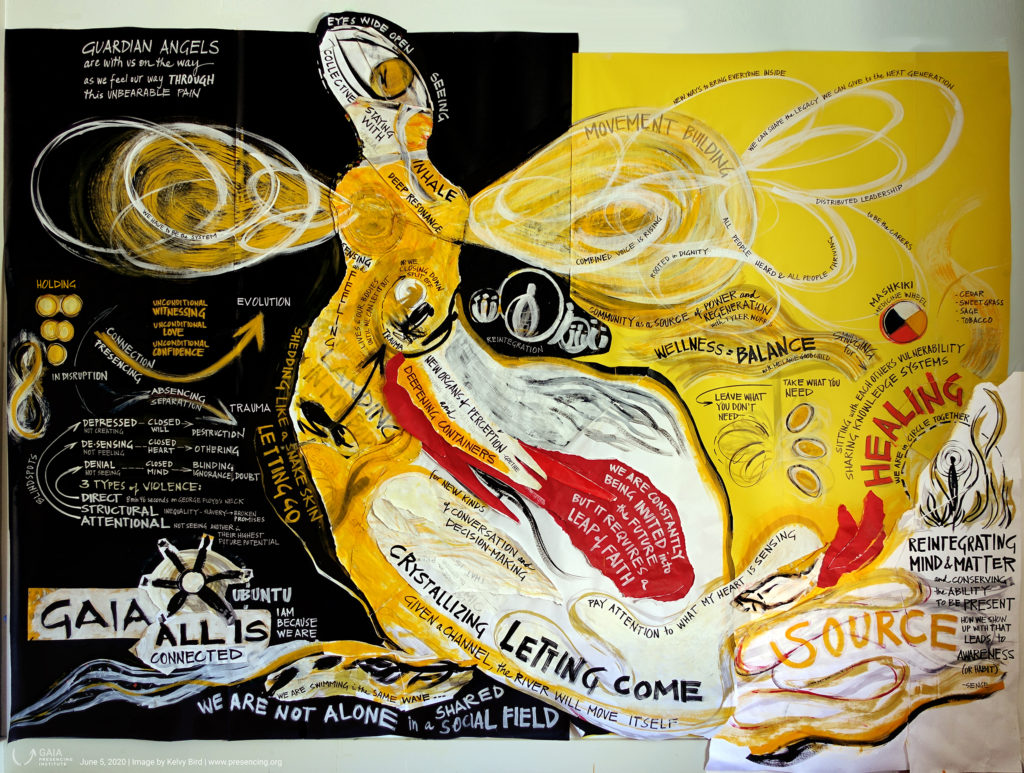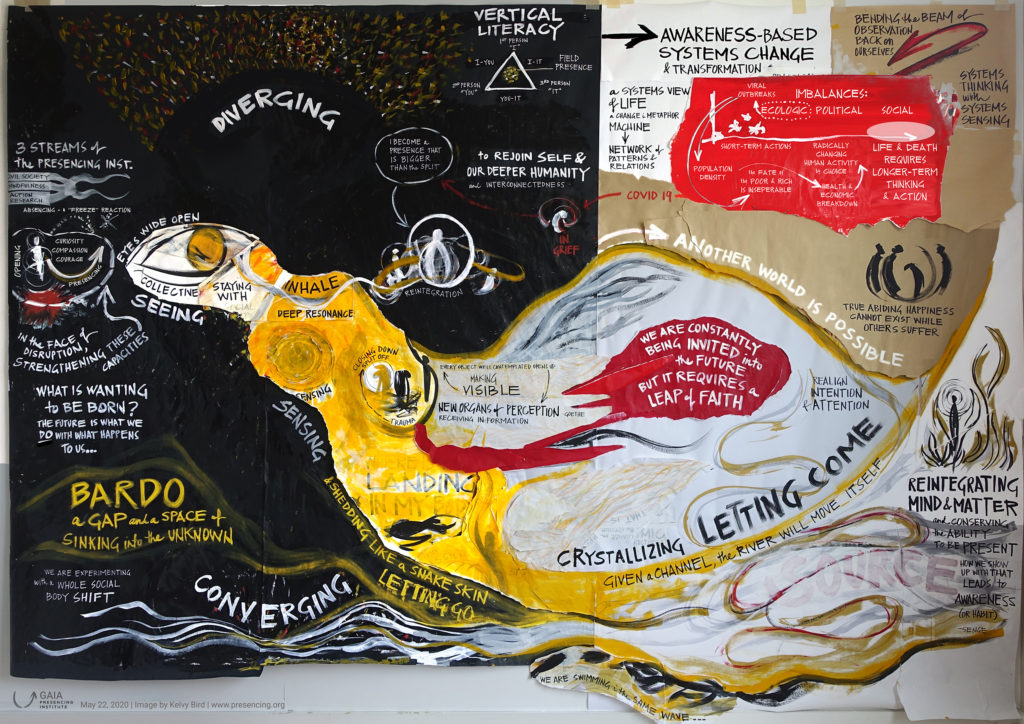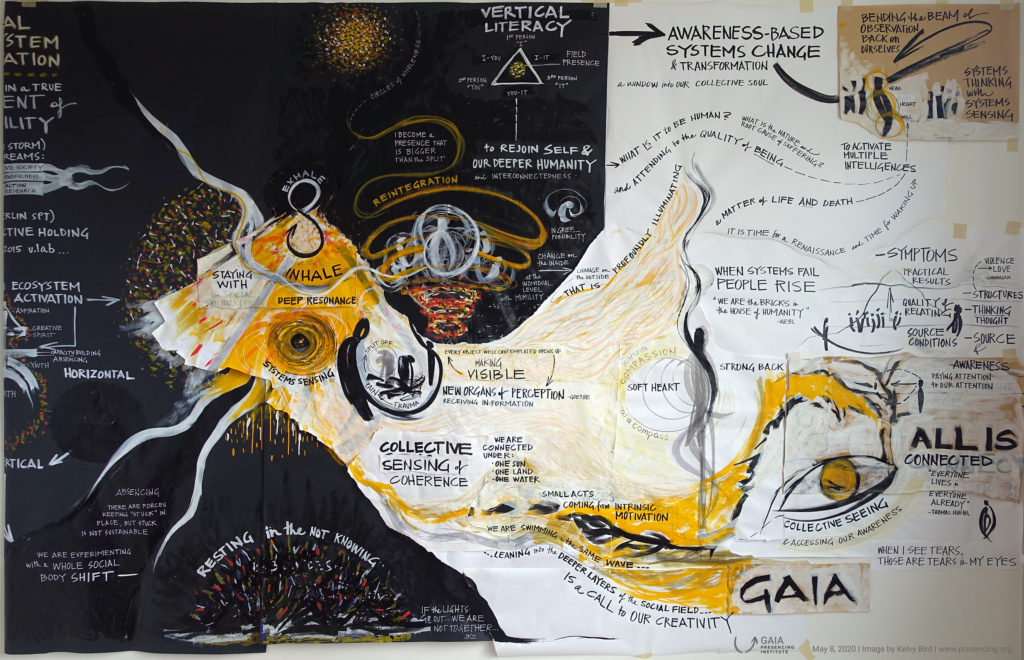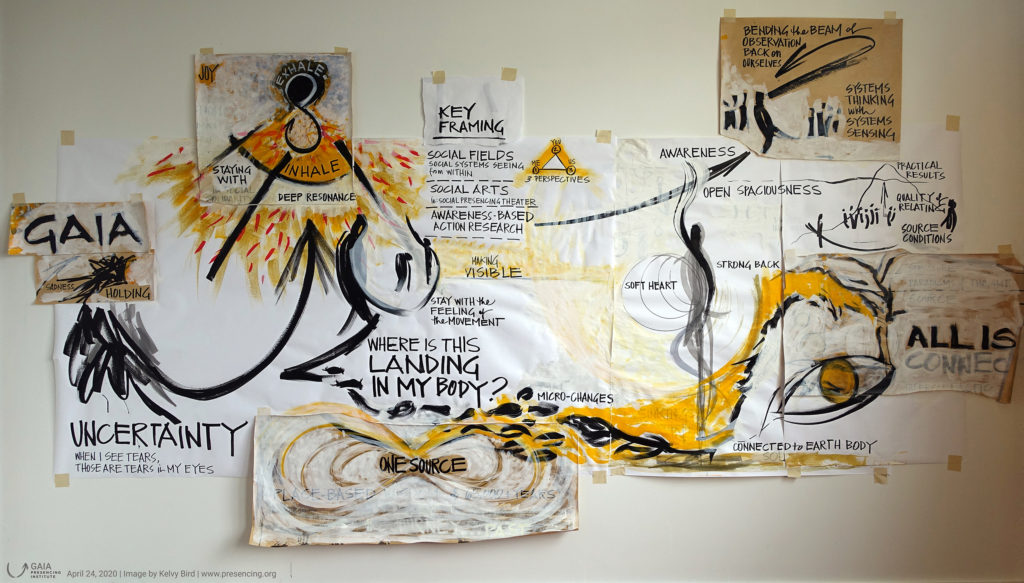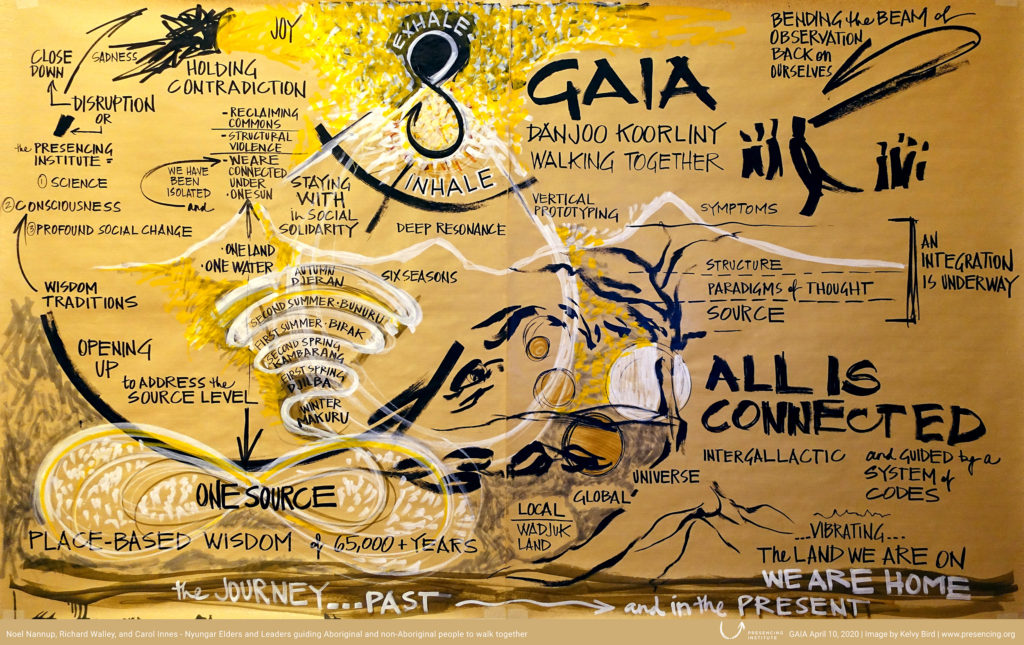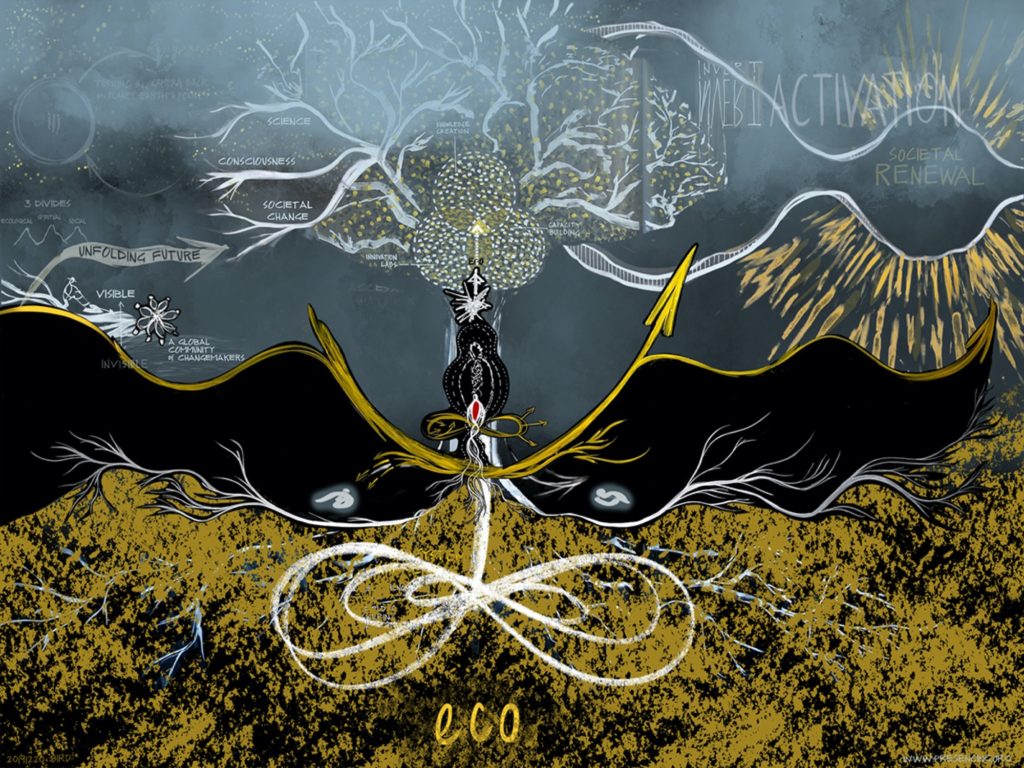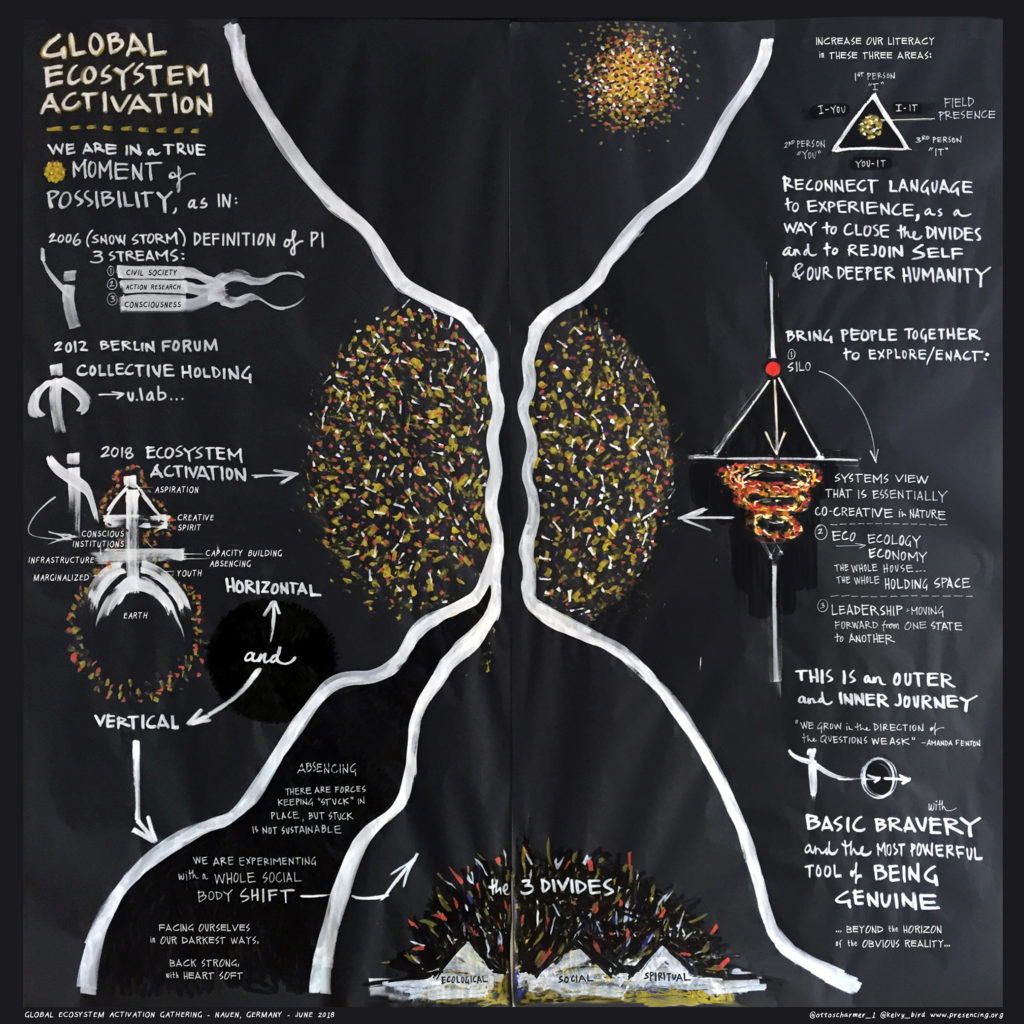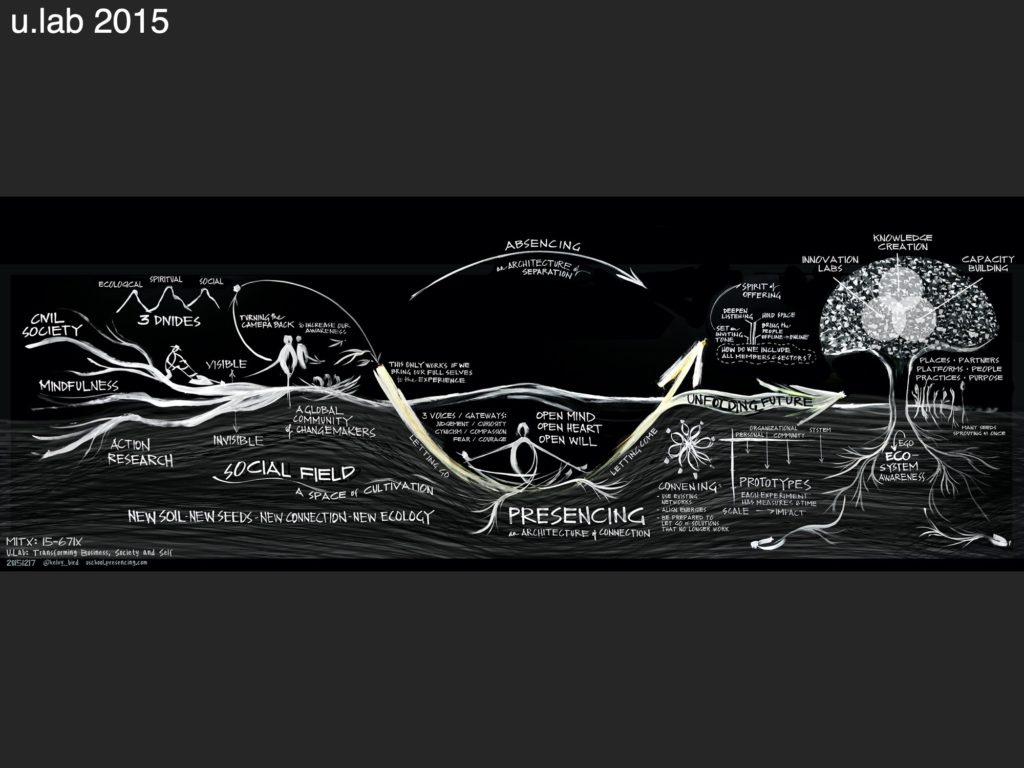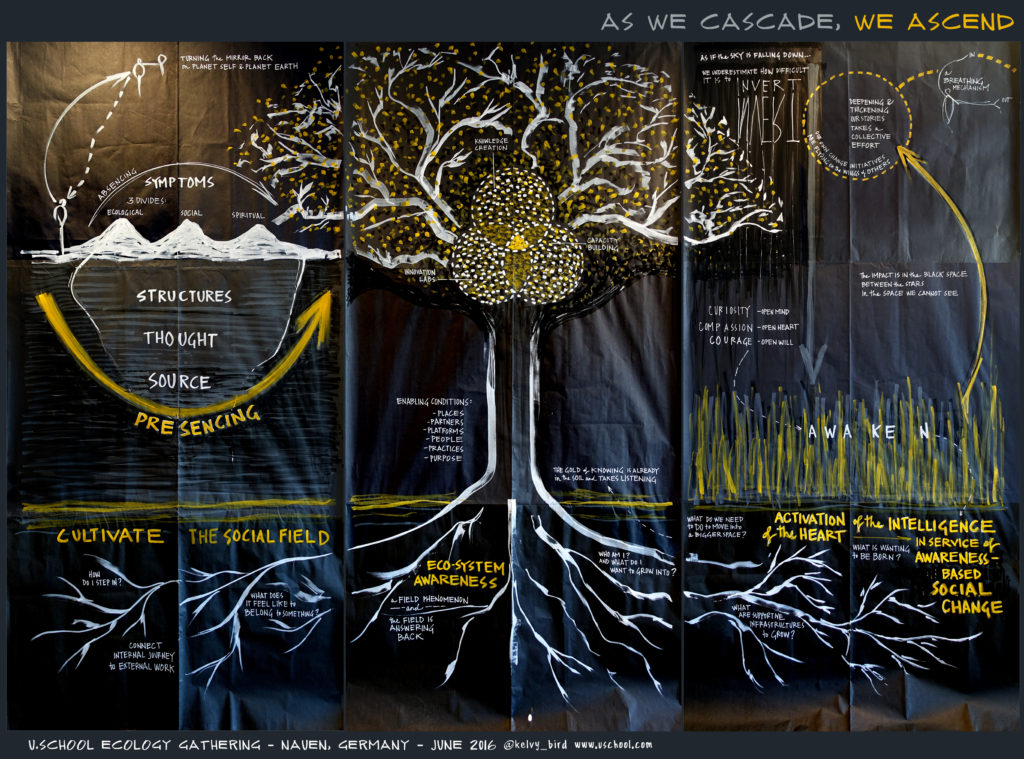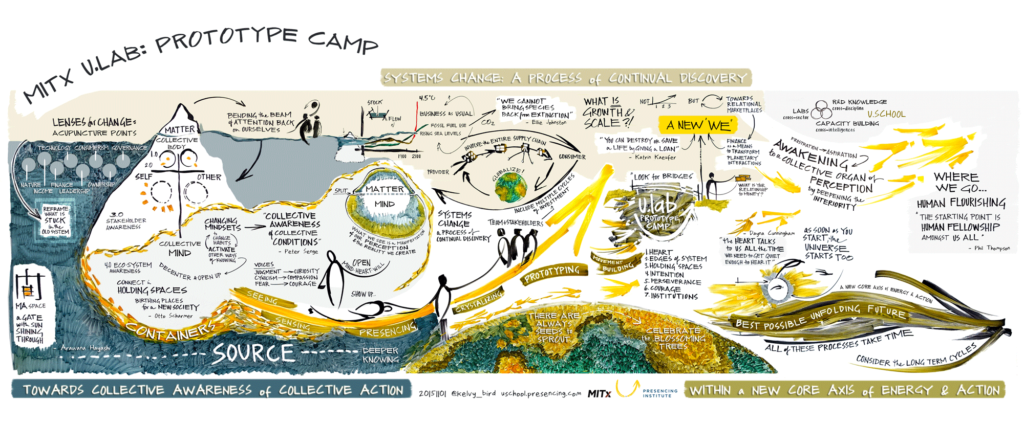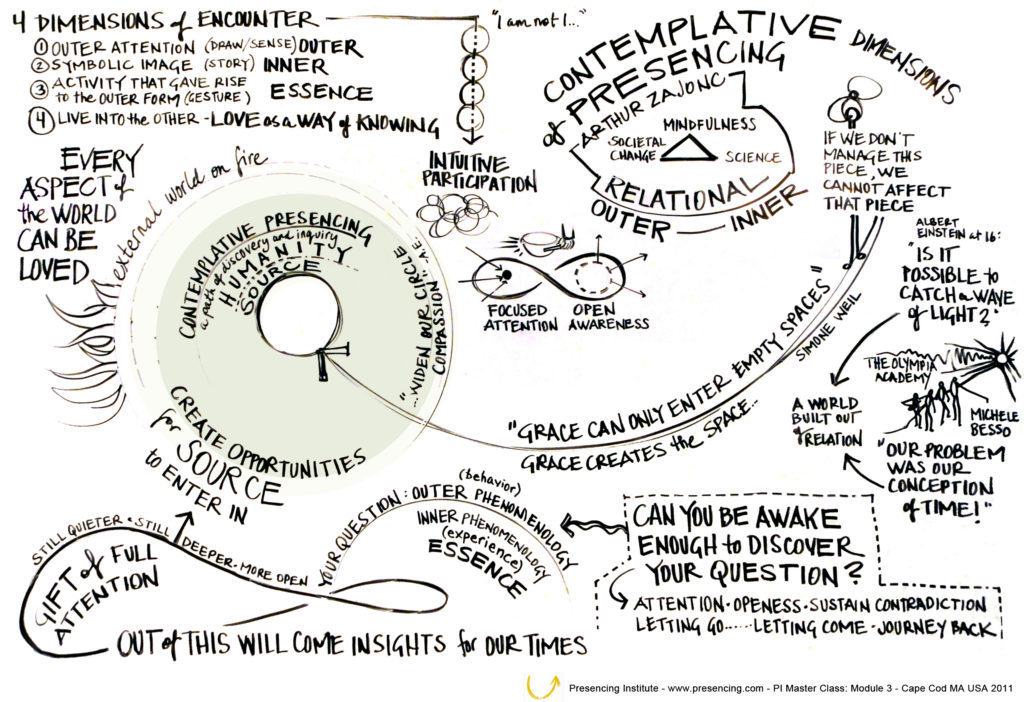There exist depths, or phases, of scribing that directly correlate with attention. Different “levels” of listening can help us participate in a shift of awareness and possibility. Otto Scharmer has described four levels of listening: (1) downloading; (2) factual; (3) empathic; and (4) generative. I apply each level of listening to the visual practice of scribing, as depicted below, and you can read more on each level here.
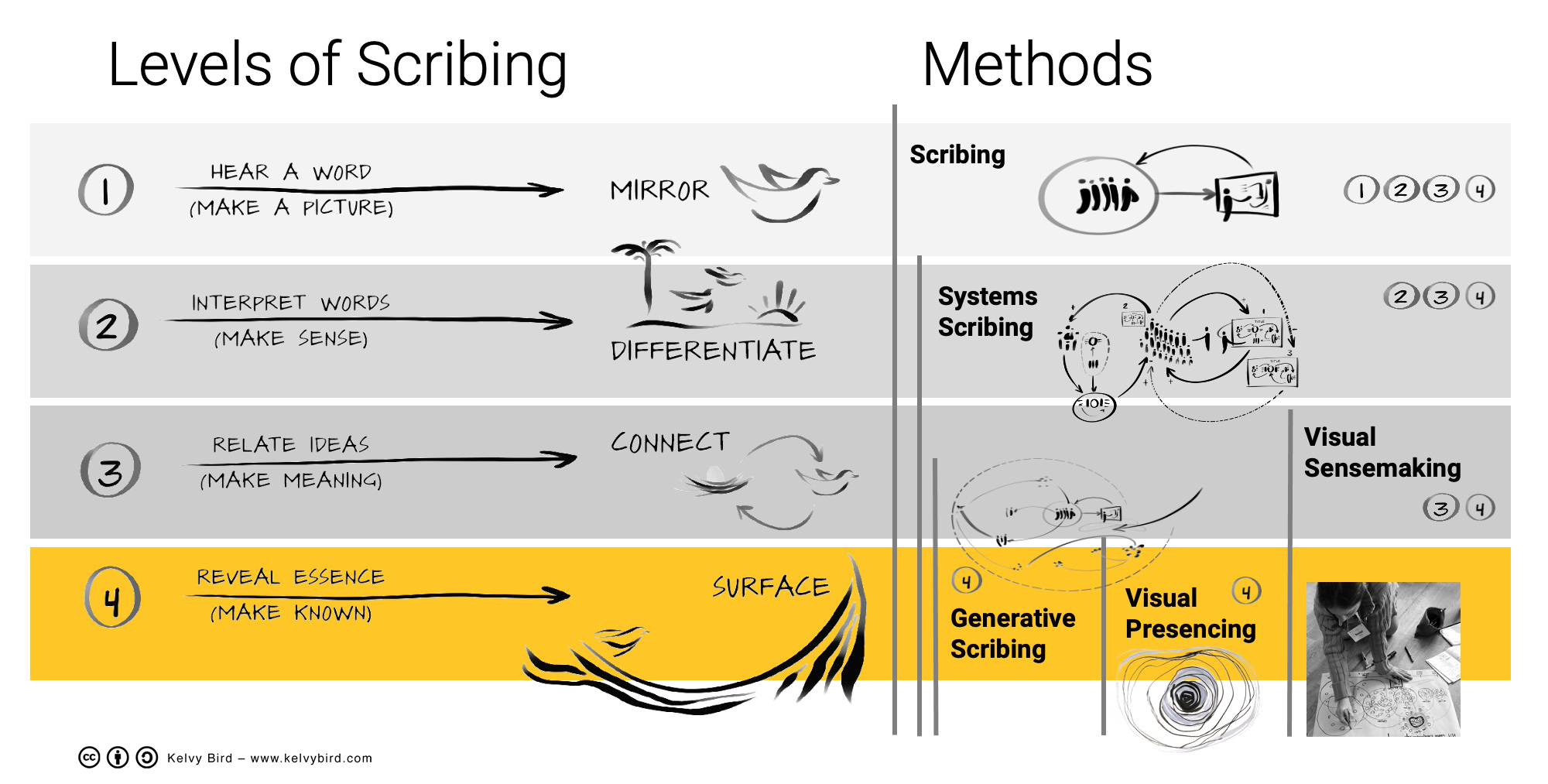
Methods of Scribing
Furthermore, there are various methods of scribing that fit within, and support, each level. Among these are:
Scribing
Scribing (also known as graphic recording/facilitation) is a visual practice that has increased in contemporary use since the 1970’s. An artist maps out ideas while people talk, and they can see a picture unfold right in front of their eyes. The drawing establishes connections within content, aids with insight, and supports decision-making. It’s essentially a language that weaves words and pictures to facilitate group learning and cultural memory, and is now embraced around the world as a popular social art and meeting tool.
Systems Scribing
Systems Scribing is an experimental visual practice that combines graphic facilitation with the science of systems thinking. Systems scribing can be done in the moment or it can be iterative, providing cycles of feedback while it uncovers dynamics and interdependencies. The method strives to produce visual artifacts that make implicit structures and behaviors explicit, supporting ongoing reflection and thinking over time. (Co-created with Jessica Riehl.)
Generative Scribing
Generative Scribing advances these practices by extending the range of the practitioner to an entire ecosystem, while drawing with an attunement to energy. A generative scribe calls particular attention to an emerging reality that is brought to life by, and for, the social field in which it’s created. Because of its interactive and co-creative nature, it serves as a device for social seeing, while offering a route to a sacred way of being, where the spirit of our humanity prevails over any individual agenda.
Visual Presencing
Visual Presencing is the act of two-dimensionally representing an experience of presencing. “Presencing, the blending of sensing and presence, means to connect from the Source of the highest future possibility and to bring it into the now”. (Otto Scharmer) Presencing also means “being with”, in order to access the potential of a moment, to open to a channel of spirit. Visual presencing aids with this attunement, both for the artist during the creative process, and for those engaging with life force through a picture. It can be practiced in private, or embedded as a method within the more social art of scribing.
Visual Sensemaking
Visual Sensemaking (as we now apply the term) is a method that uses two-dimensional language to “unpack” a current condition, inquire into its complexity, connect with source through presencing, and reveal an emergent, more coherent, possible future.
In Application
All methods are valuable in the right context, and can be combined in application at the same time, in conjunction, to enhance one another. Part of a visual practitioner’s skill is to quickly discern which approach is most useful when, and to be able to shift modalities in an instant.
For example, I might start scribing a session with a mindset that a systems method is most useful. I define parts, relationships, and feedback loops. But after drawing for just 20-minutes, I might realize that the group and system have a container strong enough to allow for deeper meaning to come through the experience, and I will slow down to pay finer attention to the tone and field, while starting to bypass more of the factual data.
It can go in the other direction, too, where I begin with a more generative approach, but realize the content calls for greater definition and clarity. The shift then would be to increase the inclusion of words and details, while suspending my inclination to attend to the energy.
Again, all levels of scribing are useful and necessary! None are better or worse than any other. And to note, there are dozens of other practices that fit within these levels (terms like graphic recording, graphic facilitation, sketch noting, mind mapping, etc….) The main thing to keep in mind is RANGE.
“Sneak Peek” Presentation
From a 30-minute zoom session, hosted on Jan 21, 2022 with Marie-Pascale Gafinen. See more context and examples for each method. (Eight seconds per slide, if not otherwise animated.)



